
Thank you for reading Issue 25.
Watch for Issue 26 in August!

Thank you for reading Issue 25.
Watch for Issue 26 in August!
I
Ten reasons Russia won’t fight/
the progress of science/
transcendence/ beauty
of empire/ origin of thought/
Ernest Hemingway/ legacy/
world of art and letters/
Cuba’s struggle for freedom/
a fortress/ the greatness of man.
II
Still holding back?/
hurried housewives/ busy bachelor
girls/ cook
book/escape
boredom, conformity/
become a cultured/ lesbian
experience, cancer/ woman troubles
out of style/ truth
about the pill/ divorcee’s post
-mortem/ Depressed? Get yourself Up/
plastic surgery for girls/
rise in a man’s world
III
4 steps, 6 minutes/
21 sex tips/
confidence boosters/
STI-proof your Relationship/ Love
Rule/ Men Vote,
live with a neurotic man/ How sexy are you?
date 8 men/
lock down his love/
outsmart a bitch/ your va-jay-jay/
the balls to tell/ that jealous bitch
is you/ 100% hotter/
bigger/ better/
ballsy
All parts come from Cosmopolitan magazine covers spanning 1894 to 2012.
M. A. Dubbs is an award winning LGBTQ Mexican-American poet. Her poetry has appeared in Nanoism, Tipton Poetry Journal, and Backbone Poetry, among others. Her poetry book, Aerodynamic Drag, debuted earlier this year.
Charles F. Richter journal entry, 6/20/26:
It was a surfeit of scientific occupation which led some years ago to a breakdown of my nerves…
1
Only one step
to go
so calmly there I stood upon the ledge
that for the moment I was half
alive
X
X
it was the realization of the artistic, or as I called it then, the spiritual aspect of the world, which first raised me out of that depression…
2
I make this prayer in experiment
let me be less uncertain in my mind
unafraid
of words
listen
just out beyond the circle of my light
they are all here
X
X
and it was the final accomplishment of self-expression in poetry which at last permitted me to return to my work.
3
At last
as if I were to turn the rusty locks
the sound of poetry
at the door
my friend
at last
you came
“Seismologist Cento” is woven entirely of lines and titles exactly as they appear in the archived poetry of Charles F. Richter, creator of the earthquake magnitude scale.
Jennifer Richter’s poetry collections No Acute Distress and Threshold were both published in the Crab Orchard Series and were both named Oregon Book Award Finalists. Richter teaches in Oregon State University’s MFA program.
x
x
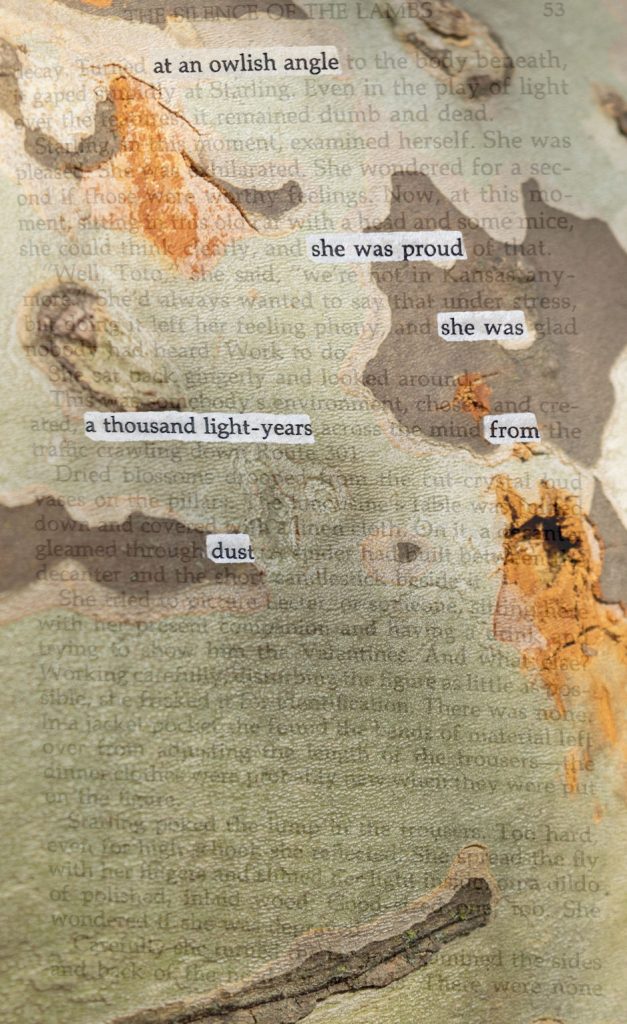

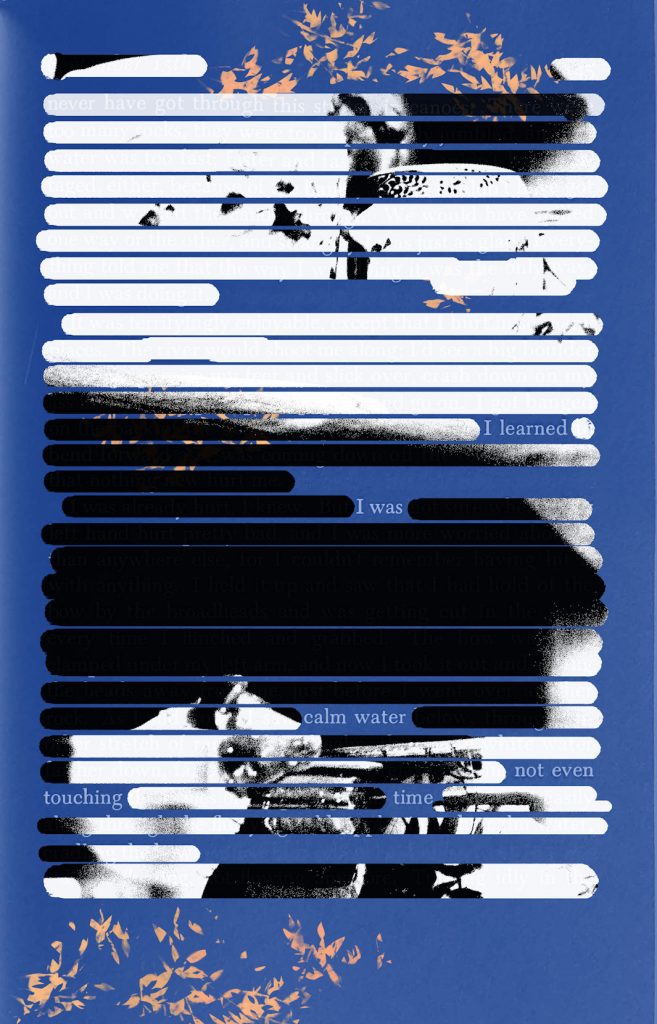
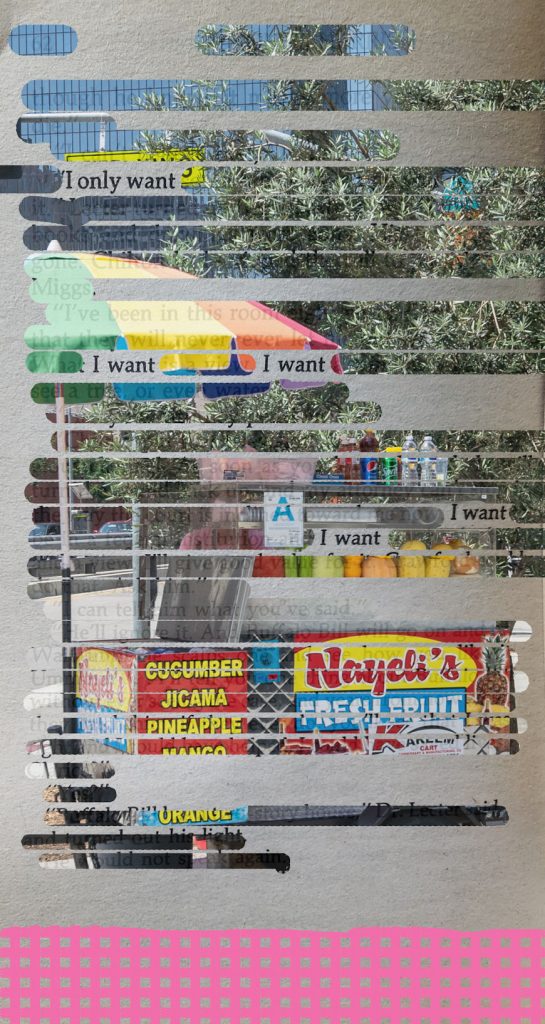
Sources: Paperbacks of Deliverance by James Dickey and Silence of the Lambs by Thomas Harris; Photos – my own. These pieces were created in Photoshop.
Kelsey Zimmerman is a writer and photographer from Michigan living in Iowa. She’s currently working on a chapbook of visual erasures.
Peter J. King, born and brought up in Boston, Lincolnshire, was active on the London poetry scene in the 1970s, returning to poetry in 2013. His work has been widely published in magazines & anthologies; available collections: Adding Colours to the Chameleon (Wisdom’s Bottom Press) & All What Larkin (Albion Beatnik Press).
https://wisdomsbottompress.wordpress.com/S
to discover how to heal them
Sources as noted.
Peter J. King, born and brought up in Boston, Lincolnshire, was active on the London poetry scene in the 1970s, returning to poetry in 2013. His work has been widely published in magazines & anthologies; available collections: Adding Colours to the Chameleon (Wisdom’s Bottom Press) & All What Larkin (Albion Beatnik Press).
https://wisdomsbottompress.wordpress.com/S
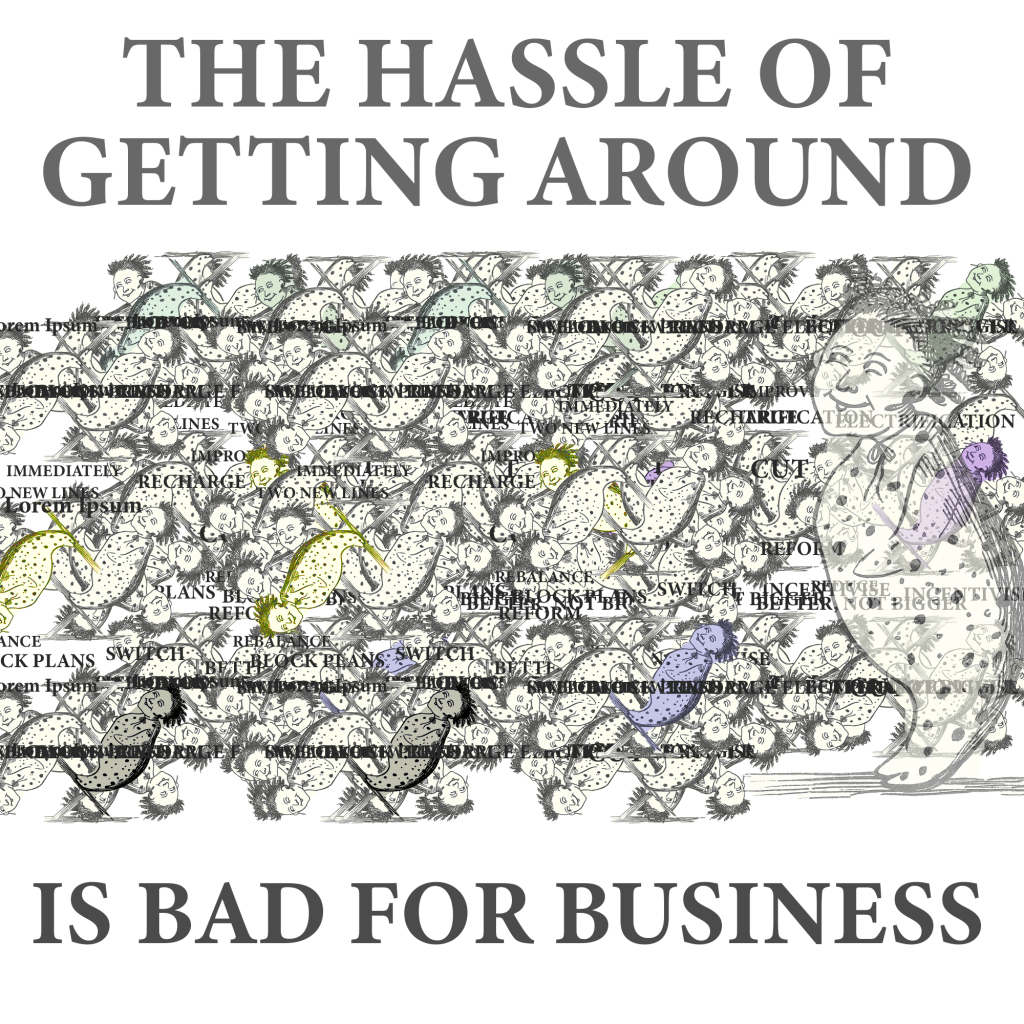



These poems are composed of scans from Edward Lear’s The Nonsense Poems and text from the 2010 Conservative Manifesto.
Sam Kemp is an experimental poet based in London, UK. He lectures in creative writing and his visual work is published widely. @Samkpoetry
Amie Whittemore is the author of the poetry collection Glass Harvest (Autumn House Press), the 2020-2021 Poet Laureate of Murfreesboro, Tennessee, and an Academy of American Poets Laureate Fellow.
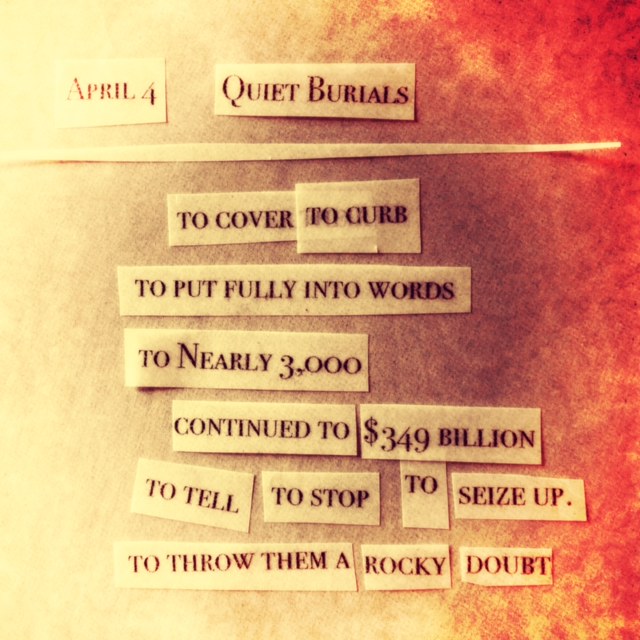
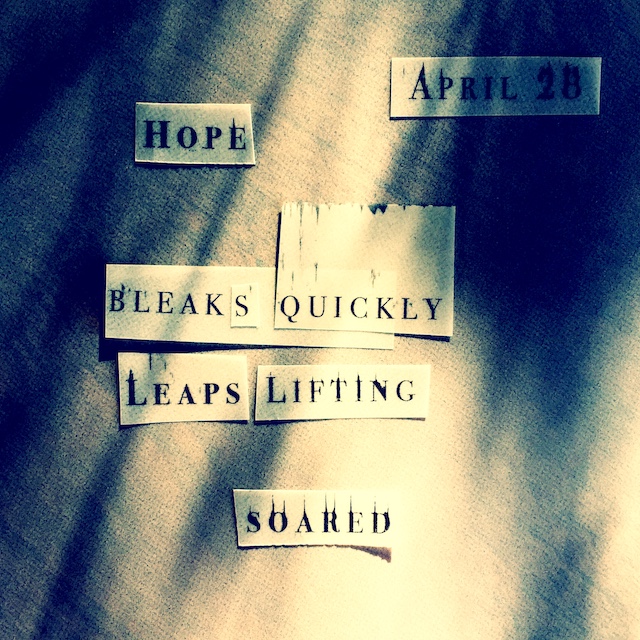
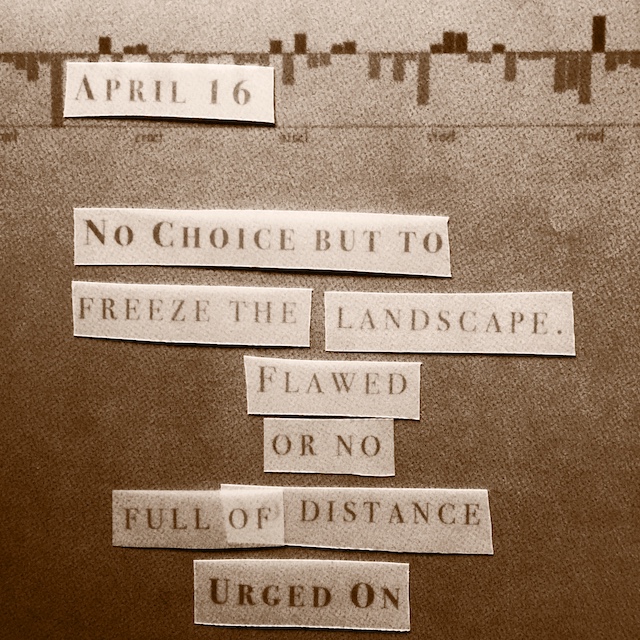

The source is New York Times front-page articles from early in the pandemic. Each day in April 2020 I printed that day’s news onto vellum paper in all caps Bodoni 16. I made analog cut-up poems in batches of five days and documented the poems with digitally altered photographs.
Alexis Fedorjaczenko lives on a hilltop in Massachusetts. She holds an MFA in poetry and essay from Western CT State University and a Master of Public Health degree from Yale University. Alexis tweets @ObjetAutre.
i.
A hummingbird hovers
in the thick, humid air
when I take the dog
for his first morning piss.
The bird darts in
all unholy directions
close enough to touch
as if it’s trying
to send me a message
encoded in wing beats.
The medicine cards say
that hummingbird signifies
a lightness of being,
an ability to be present
to life’s inexplicable joys,
even those, such as these,
which shatter.
The feathers are often
used in love charms,
but no tiny feather
drops into the hand
I offer in open,
begging prayer.
I only have my words
and I choose them
with an undertaker’s care,
hoping each will pry
the day open wider
and let more of me fit
into the shrinking crack
between now and
when you are gone.
I tell you of the melody,
the high lonesome harmony
that sang such sweetness
through the silver light at dawn.
I tell you how beautiful I felt
barefoot in the dew
beneath near-static flight,
and you say the hummingbird
must have wanted to be close
to something sweet and beautiful, too.
You mean me, of course,
and I clutch the truth of my charms.
It is the only thing I get to keep.
ii.
We buried the hummingbird,
my daughter and I – wrapped it
in a square of green silk cut
from the mermaid costume
she wore when she was four,
the same green as the feathers
the color of ocean and sunshine
as seen from rippled sand
beneath the waves of the Atlantic.
She thinks the tears pooling
at the edge of my chin,
where the skin seems so loose,
as if I, too, am giving in to gravity,
are for the bird, and I suppose
they are in a way. I can’t help
but cry for the loss of flight,
for the sudden absence of
this nectar-sipping proboscis
in my Monarda patch.
I pluck a tiny feather
from the tail, and when
she dips her face close
to whisper goodbye,
I tuck it under my tongue.
I will have my love charm,
even if I must
swallow
its hollow shaft.
iii.
Of late I’ve been afflicted
by too many hummingbirds;
every poem starts
with a winged trickster
darting into my thoughts,
sucking out the sweetness
instantly recalling to me
the hopelessness
of the words I wrote
before I understood
ticking clocks,
body lanterns,
whiskers,
shoulders
dipping down,
growing
stacks of pages
I do not wish to see
how wrong I got it –
the message I thought
that bird was trying to impart.
He only wanted me
to step away from his babies,
knowing how close I was to
tearing my own nest to shreds.
I wrote this in stages as I found sparks from “Medicine Cards,” Jamie Sams; “Hummingbird,” Dorianne Laux; “Complaint and Plea,” Jim Harrison. I thought it was done with part i. but it continued to grow.
i. Information about hummingbird meaning and its feathers being used for love charms from Medicine Cards: The Discovery of Power Through the Ways of Animals by Jamie Sams and David Carson
ii. “We buried the hummingbird” is the first line in Dorianne Laux’ “Hummingbird” in the collection Facts About the Moon, ©2006 W. W. Norton and Co.
iii. “Of late I’ve been afflicted by too many hummingbirds” is the first line in Jim Harrison’s “Complaint & Plea” in the collection In Search of Small Gods, ©2010 Copper Canyon Press
Kelly Hambly is a hungry-for-home New Englander living in Kent, Ohio where she writes poetry, fiction, and creative non-fiction in the spaces between her work as a marketing and advertising copywriter.
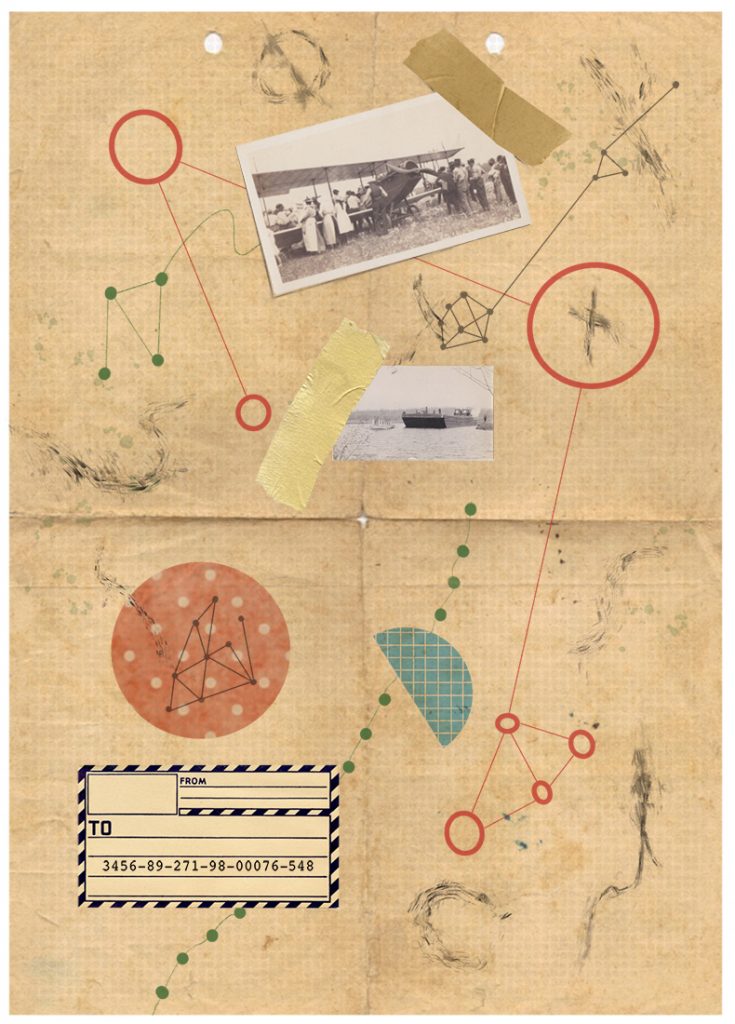
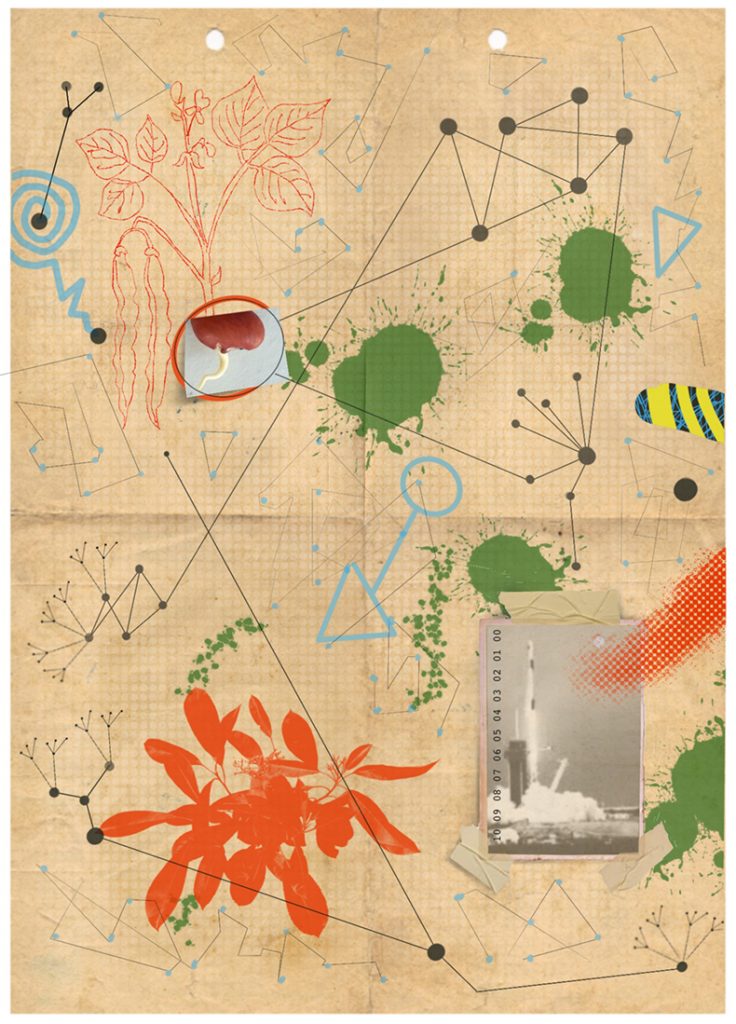
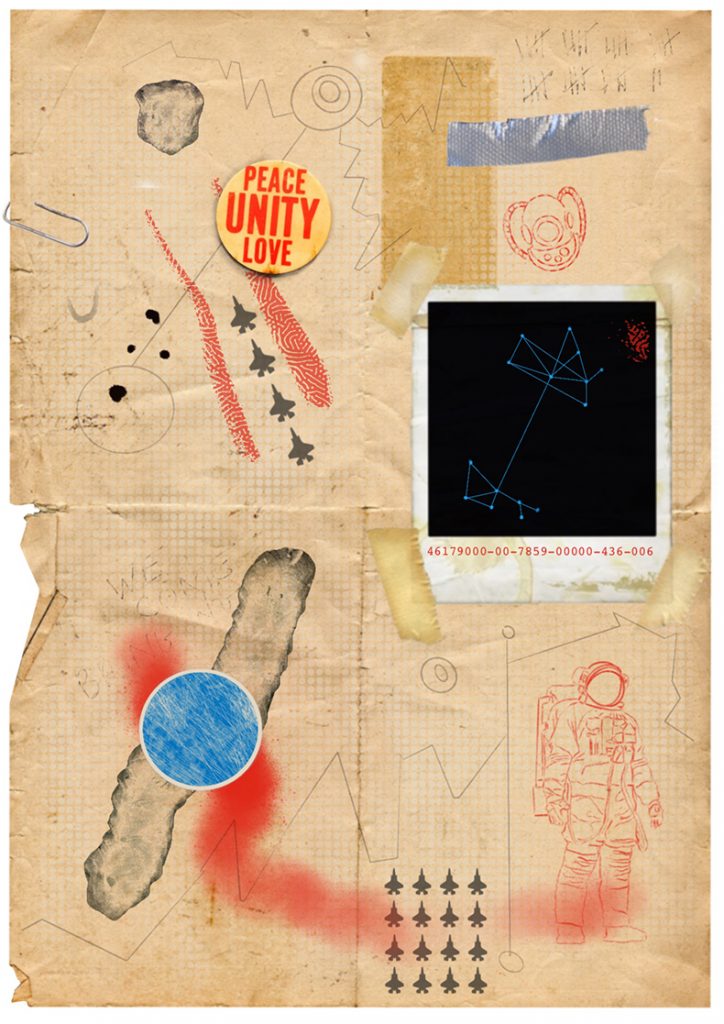
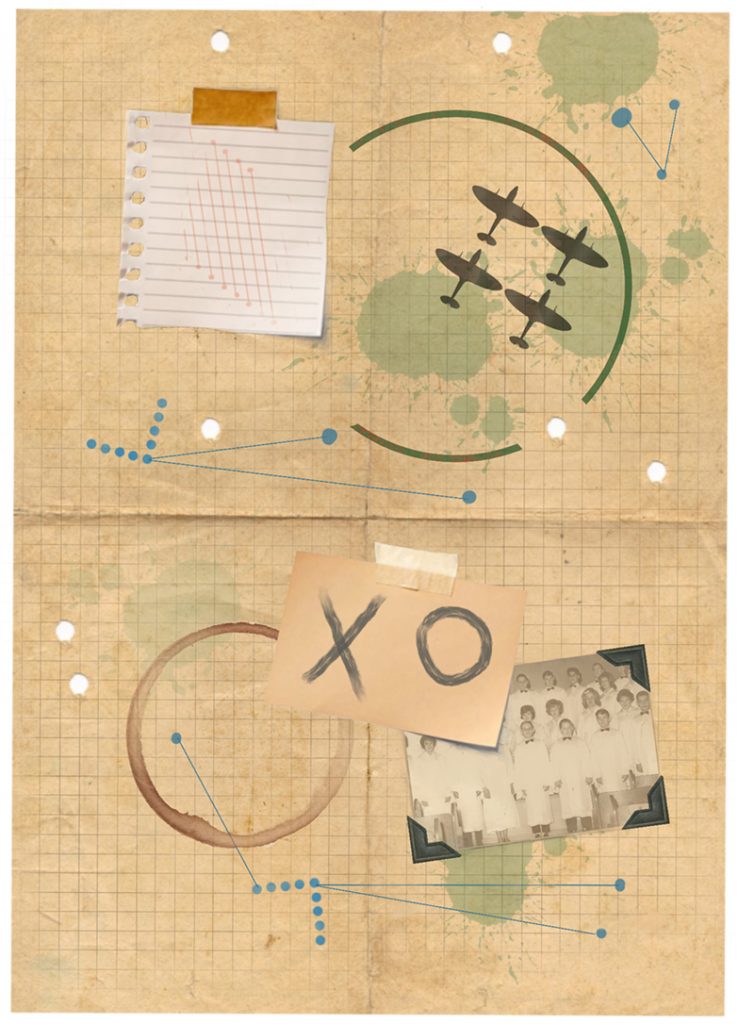
I use personal photographs and found images to create digital collages.
Dale Patterson is a retired art teacher who fills his spare time writing poetry and creating visual art. His work has been published in numerous online and print journals.
calling forth
a beginning
calling forth
a cross
calling forth
the vulgar
calling forth this terror
this secret this quaking
calling forth
this walking towards
calling forth
Black abolition
calling forth this new
dominion
calling forth this
outbreak of secret god
I’ve been interested in abolitionist John Brown for a long time and recently received a grant from Saratoga Arts up in upstate New York to visit his farm, read, talk to people, and write poems. This is the beginning of one vein of that project and is based on a single old newspaper article from the Baltimore American, which collected the headlines of various newspapers reporting on Brown’s seizure of Harpers Ferry. It’s fascinating how the media framed that experience (and it implies a bunch for the public too: how they would “receive” the experience, but also maybe what they were ready for, how newspapers figured readers would best take it). As the titles within label it, I begin with the common nouns from those headlines, adding just a touch of light, simple language (usually just “It was…”). From there I work in the etymologies of those common nouns, then a mix of phrases from just the titles, a mix of phrases from just the etymologies, and then a mix from both.
From “HOW WOULD IT FIGURE IN HISTORY” Baltimore American, November 14, 1859, front page. A special thanks to Heather Thomas and Erin Sidwell at The Library of Congress for locating the newspaper article for me.
Andy Fogle is the author of Across from Now and seven chapbooks of poetry, including the forthcoming Arc & Seam: Poems of Farouk Goweda, co-translated with Walid Abdallah. Music’s at fogle.bandcamp.com.
calling out
accursed Virginia
calling out
war by some
calling out
this god that causes terror
calling out
the straw forager
calling out
the timid:
to do
begin
to do
rise up
to do
be at the helm of
to do
erupt
to do
walk towards
great Virginia
nipped in the bud
Black beginning
nipped in the bud
Black abolition
nipped in the bud
Black excitement
the new old scare